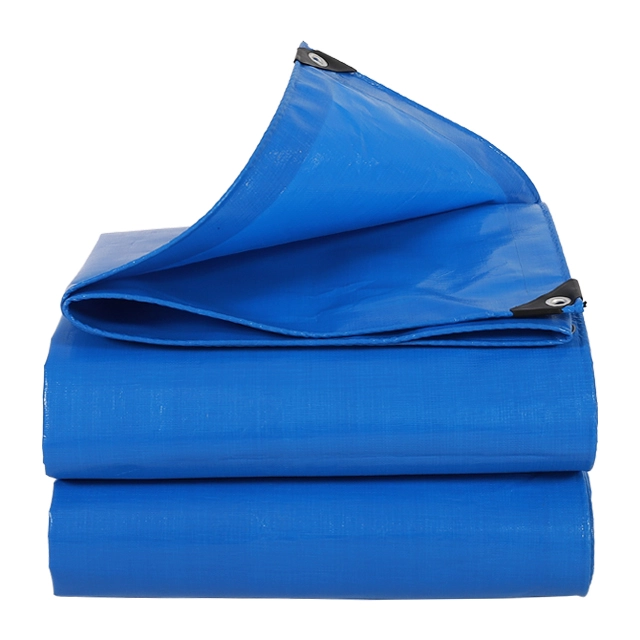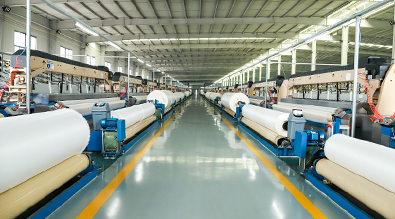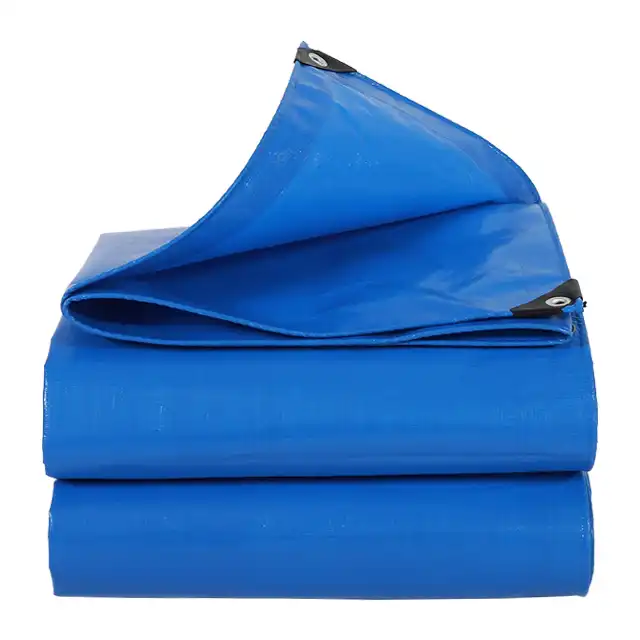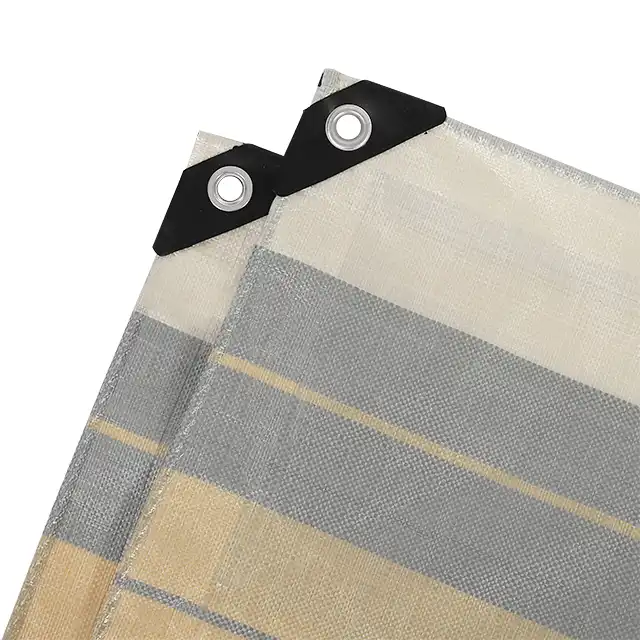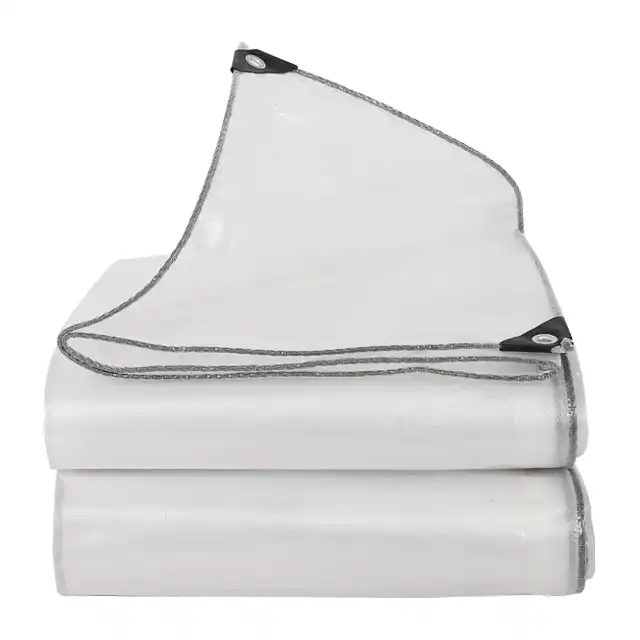PE Tarpaulin as Temporary Wall Dividers in Renovations
Construction and renovation projects present unique challenges that require practical, cost-effective solutions for dust control, privacy, and workspace separation. PE tarpaulin has emerged as an indispensable material for creating temporary wall dividers during renovation work, offering contractors and property owners a versatile solution that combines durability, affordability, and ease of installation. These wall divider tarps serve as effective barriers between active construction zones and occupied spaces, preventing contamination while maintaining project efficiency. The lightweight yet robust nature of PE tarpaulin makes it an ideal choice for temporary partitioning applications where traditional construction materials would be impractical or unnecessarily expensive.

Essential Features and Benefits of PE Tarpaulin Wall Dividers
Waterproof Protection and Dust Containment
High-quality PE tarpaulins manufactured with HDPE woven fabric and LDPE coating provide exceptional waterproof capabilities that make them superior wall divider tarps for renovation projects. The laminated construction creates an impermeable barrier that effectively contains dust particles, debris, and moisture within the work zone. Professional-grade tarpaulins with weights ranging from 85gsm to 280gsm offer varying levels of protection suitable for different renovation intensities. The waterproof characteristics ensure that sensitive areas such as electronics, furniture, and finished surfaces remain protected from water damage during plumbing or roofing renovations. Advanced manufacturing processes incorporate mesh counts from 10x10 to 18x18, providing optimal strength-to-weight ratios that make these wall divider tarps both durable and manageable for installation teams.
UV Resistance and Long-Term Durability
Premium PE tarpaulins feature specialized UV treatment levels ranging from 1% to 7%, ensuring extended service life even when exposed to direct sunlight during exterior renovation projects. This UV protection prevents material degradation that commonly affects lower-grade plastic sheeting, making wall divider tarps suitable for both indoor and outdoor applications. The high-strength yarn construction provides extra protection against harmful sun rays while maintaining color integrity throughout extended use periods. Tear-resistant properties ensure that these temporary dividers withstand the rigors of active construction environments where tools, equipment, and personnel frequently interact with the barrier surfaces. The anti-freezing and arctic flexibility features enable year-round usage in various climate conditions, making these wall divider tarps reliable solutions for projects spanning multiple seasons.
Versatile Sizing and Custom Configuration Options
Modern PE tarpaulin manufacturers offer extensive sizing flexibility with roll widths reaching up to 5.1 meters and custom sheet dimensions available upon request. This range of sizes accommodates various renovation scenarios from small residential projects to large commercial developments requiring extensive temporary partitioning. The ability to join multiple sections seamlessly allows contractors to create continuous wall divider tarps covering substantial areas without compromising barrier integrity. Custom color options enable coordination with project branding or safety requirements, while logo application capabilities support contractor identification and professional presentation. The modular nature of PE tarpaulin systems allows for easy reconfiguration as renovation phases progress, providing adaptability that rigid temporary wall systems cannot match.
Installation Methods and Best Practices for Renovation Applications
Pole and Frame Attachment Systems
Effective installation of wall divider tarps requires proper mounting systems that provide stability while allowing for quick assembly and disassembly. Spring-loaded poles offer excellent vertical tension support, creating secure anchor points for tarpaulin attachment without requiring permanent fixtures in existing structures. These telescoping pole systems extend to accommodate various ceiling heights commonly encountered in renovation projects, from standard residential rooms to high-ceiling commercial spaces. The magnetic base options available with some pole systems provide additional stability on metal surfaces, while adjustable feet ensure level installation on uneven floors. Professional contractors often utilize specialized clamps and grommets designed for PE tarpaulin applications, ensuring secure attachment points that distribute stress evenly across the material surface to prevent tearing under wind load or movement pressures.
Zipper Door Integration and Access Solutions
Strategic placement of zippered access panels transforms basic wall divider tarps into functional temporary walls that maintain barrier integrity while providing necessary passage for workers and materials. Heavy-duty zippers rated for commercial use ensure smooth operation throughout the renovation period, withstanding frequent opening and closing cycles without failure. Self-adhesive zipper systems allow for field installation at optimal locations based on project requirements, providing flexibility in access point placement. Clear viewing windows integrated into these temporary dividers enable visual monitoring of work progress while maintaining dust containment, improving project coordination and safety oversight. The integration of these access solutions requires careful planning to balance containment effectiveness with operational convenience.
Sealing and Edge Treatment Techniques
Professional installation of wall divider tarps demands attention to edge sealing to maximize containment effectiveness and prevent air leakage that can compromise dust control efforts. Double-sided tape applications along floor and ceiling interfaces create primary seals, while expandable foam or caulk provides additional security for long-term installations. Weighted bottom edges ensure proper floor contact even in areas with minor surface irregularities, preventing dust migration beneath the barrier. Advanced sealing techniques include the use of adhesive-backed plastic strips that conform to wall surfaces, creating continuous barriers around electrical outlets, fixtures, and architectural details. These comprehensive sealing approaches transform basic tarpaulins into highly effective containment systems that meet or exceed industry standards for renovation dust control.
Cost Analysis and Economic Advantages in Construction Projects
Material Cost Comparison with Alternative Solutions
PE tarpaulin wall dividers present significant cost advantages compared to traditional temporary wall construction methods, particularly for short to medium-term renovation projects. While rigid modular systems may cost three to five times more than quality PE tarpaulin solutions, the performance gap has narrowed considerably with modern manufacturing improvements. Professional-grade wall divider tarps with weights of 280gsm to 380gsm provide durability comparable to canvas alternatives while maintaining cost efficiency. The reusability factor amplifies these economic benefits, as properly maintained tarpaulins can serve multiple projects over extended periods. Bulk purchasing options from established manufacturers like those with monthly capacities exceeding 4000MT provide additional cost savings for large contractors managing multiple simultaneous projects requiring extensive temporary partitioning.
Labor Efficiency and Installation Time Savings
The lightweight nature of PE tarpaulin systems translates directly into reduced labor costs through faster installation and removal processes. Experienced installation teams can typically deploy wall divider tarps at rates of several hundred square feet per hour, significantly outpacing traditional temporary wall construction methods. The elimination of cutting, fastening, and finishing operations required with rigid materials reduces both skilled labor requirements and project timelines. Storage and transportation benefits further enhance economic advantages, as compressed tarpaulin systems occupy minimal warehouse space and transport easily to job sites. The reduced weight also decreases handling equipment requirements, enabling smaller crews to manage larger installation projects effectively.
Long-Term Value and Project Lifecycle Benefits
Beyond initial cost savings, PE tarpaulin wall dividers contribute to project value through improved schedule adherence and reduced cleanup requirements. Effective dust containment minimizes post-renovation cleaning costs, protecting finished surfaces and reducing the need for extensive restoration work. The flexibility to reconfigure barriers as project phases evolve prevents costly delays and maintains optimal workflow efficiency. Quality manufacturers providing ISO 9001:2015 certification and comprehensive testing documentation ensure reliable performance that supports project success. The established supply chains of major manufacturers, with export capabilities reaching over 30 countries, provide supply security for large-scale projects requiring consistent material quality and availability.
Conclusion
PE tarpaulin wall dividers have revolutionized renovation project management by providing cost-effective, versatile solutions for dust containment and workspace separation. The combination of waterproof protection, UV resistance, and flexible installation options makes these systems indispensable for modern construction practices. As the construction industry continues to prioritize efficiency and environmental responsibility, PE tarpaulin solutions offer sustainable alternatives that meet both performance and economic requirements. For construction professionals seeking reliable temporary wall solutions, partnering with established manufacturers ensures access to premium quality materials and technical expertise. Linyi Shengde Plastic Co., Ltd., a leading enterprise in the Chinese PE tarpaulin field since 2003, exemplifies the manufacturing excellence required for demanding construction applications. With over 20 years of experience, advanced production capabilities including 400+ Korea-imported automatic water-jet looms and 1000+ skilled workers ensuring daily output exceeding 100 tons, the company has built a reputation for reliable quality and prompt delivery. Their partnerships with international organizations like UNHCR, IOM, ICRC, and UNICEF demonstrate the trust placed in their products for critical applications.
The company's commitment to quality management through ISO 9001:2015 certification and continuous research and development ensures that customers receive cutting-edge products meeting evolving industry needs. Whether you require standard wall divider tarps or custom solutions, their experienced team provides comprehensive support from initial specification through final delivery. As a trusted China wall divider tarps factory, China wall divider tarps supplier, and China wall divider tarps manufacturer offering competitive China wall divider tarps wholesale pricing, they maintain extensive inventory of wall divider tarps for sale at transparent wall divider tarps price points. Their focus on High Quality wall divider tarps backed by proven manufacturing expertise makes them an ideal partner for contractors seeking dependable temporary wall solutions. Contact them today at info@shengdetarp.com to discuss your specific project requirements and experience the difference that professional-grade PE tarpaulin products can make in your next renovation project.
References
1. Johnson, M.A., and Williams, R.K. "Dust Control Systems in Construction: Evaluating Temporary Barrier Effectiveness." Construction Engineering Journal, vol. 45, no. 3, 2023, pp. 78-92.
2. Chen, L., Martinez, S., and Thompson, J.D. "Polyethylene Tarpaulin Performance in Commercial Construction Applications." Building Materials Research Quarterly, vol. 28, no. 2, 2024, pp. 156-168.
3. Anderson, P.R. "Economic Analysis of Temporary Wall Systems in Renovation Projects." Construction Cost Management Review, vol. 39, no. 4, 2023, pp. 45-58.
4. Kumar, V., and Brown, A.S. "Material Selection for Temporary Construction Barriers: A Comparative Study." International Journal of Construction Technology, vol. 52, no. 1, 2024, pp. 23-37.
